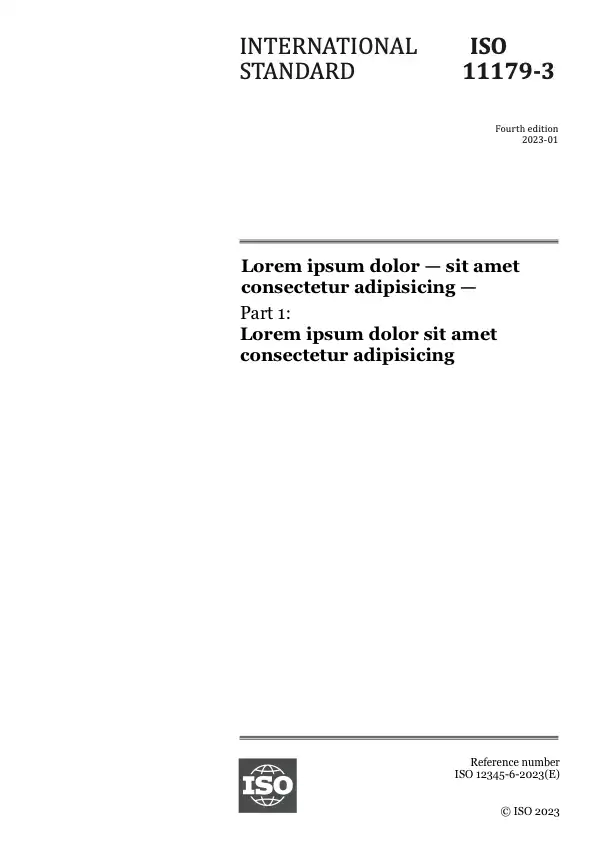Тезис
This document specifies procedures for measuring and reporting the noise emission of information technology and telecommunications equipment.
NOTE 1 This document is considered part of a noise test code (see 3.1.2) for this type of equipment and is based on basic noise emission standards (see 3.1.1) ISO 3741, ISO 3744, ISO 3745, ISO 9295 and ISO 11201.
The basic emission quantity is the A-weighted sound power level, which can be used for comparing equipment of the same type but from different manufacturers, or for comparing different equipment.
Three basic noise emission standards for determination of the sound power levels are specified in this document in order to avoid undue restriction on existing facilities and experience. ISO 3741 specifies comparison measurements in a reverberation test room; ISO 3744 and ISO 3745 specify measurements in an essentially free field over a reflecting plane. Any of these three basic noise emission standards can be selected and used exclusively in accordance with this document when determining sound power levels of a machine.
The A-weighted sound power level is supplemented by the A-weighted emission sound pressure level determined at the operator position or the bystander positions, based on basic noise emission standard ISO 11201. This sound pressure level is not a level of noise immission at a work station (see 3.2.12), but it can assist in identifying any potential problems that could cause annoyance, activity interference or hearing damage to operators and bystanders.
Methods for determination of whether the noise emission includes prominent discrete tones are specified in Annex D.
This document is suitable for type tests and provides methods for manufacturers and testing laboratories to obtain comparable results.
The methods specified in this document allow the determination of noise emission levels for a functional unit (see 3.1.4) tested individually.
The procedures apply to equipment which emits broad-band noise, narrow-band noise and noise which contains discrete-frequency components, or impulsive noise.
The sound power and emission sound pressure levels obtained can serve noise emission declaration and comparison purposes (see ISO 9296[3]).
NOTE 2 The sound power levels and emission sound pressure levels obtained are not intended to be considered as installation noise immission levels; however, they can be used for installation planning (see ECMA TR/27[11]).
If sound power levels obtained are determined for a number of functional units of the same production series, they can be used to determine a statistical value for that production series (see ISO 9296[3]).
Preview
Общая информация
-
Текущий статус: ОпубликованоДата публикации: 2018-11Этап: Подтверждение действия между-народного стандарта [90.93]
-
Версия: 4
-
Технический комитет :ISO/TC 43/SC 1
- RSS обновления
Жизненный цикл
-
Ранее
ОтозваноISO 7779:2010
-
Сейчас
ОпубликованоISO 7779:2018
Стандарт, который пересматривается каждые 5 лет
Этап: 90.93 (Подтверждено)-
00
Предварительная стадия
-
10
Стадия, связанная с внесением предложения
-
20
Подготовительная стадия
-
30
Стадия, связанная с подготовкой проекта комитета
-
40
Стадия, связанная с рассмотрением проекта международного стандарта
-
50
Стадия, на которой осуществляется принятие стандарта
-
60
Стадия, на которой осуществляется публикация
-
90
Стадия пересмотра
-
95
Стадия, на которой осуществляется отмена стандарта
-
00
Появились вопросы?
Ознакомьтесь с FAQ
Часы работы:
Понедельник – пятница: 09:00-12:00, 14:00-17:00 (UTC+1)

